FlowJo, LLC designs, produces, and markets patented software used by life science researchers worldwide to analyze data collected from flow cytometry equipment.
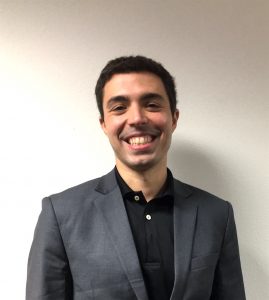
NOTE: The following is primarily transcribed narrative from Mike Stadnisky, Ph.D., CEO of FlowJo, LLC, captured during a recent tour of their headquarters in Ashland. Some minor changes—a word or phrase here and there—were made to translate conversational to narrative format, or to clarify a concept. Adjunct research provided some background material and links to engage the more technically-oriented reader. Enjoy!
The Process
Flow Cytometry is a process whereby cells (such as from a tube of blood) are directed, single file, past a laser light source at a deliberate pace so that various cell properties (absorption spectrum, extinction coefficient, emission spectrum, quantum efficiency) can be measured. [As a frame of reference, one drop of blood contains from 3,700 to 10,500 white blood cells.] The data is collected, digitized and written to a file in listmode format (columns & rows), poised for the analysis and reporting phases of the process.
The company’s flagship software product, FlowJoTM, performs single-cell analysis for proteins; basically, focusing on the current reality—or, status—of cells. The current software offering is designed to run on a desktop computer; however, the company is in the process of expanding their offerings by moving to cloud-based software in order to provide a differentiated data management and collaboration system that fits the type of work that life scientists perform.
Life scientists don’t simply create data; they create data as part of a workflow. They perform experiments as part of a multi-step protocol, and record multiple different measurement modalities for the same blood or tissue sample. So there are lots of different touchpoints, and what no one else has ever done before is to integrate those modalities and encapsulate them in a framework specific to Life Sciences. This is one piece of the analysis process.
Single–Cell Sequencing is the other piece. In layman’s terms, FlowJo, LLC’s work is analogous to building the equivalent of the Hubble Space Telescope (HST) for biology. Right now, we can ask 40-50 questions per cell, which might be compared to using really big binoculars to look at the stars from earth.
The meaning of the comparison to HST is: When you’re looking at the stars through the Hubble Space Telescope [a very large camera encapsulated within an orbiting spacecraft], you have an effective magnification of about 8,000-fold. In essence, the enormous light-gathering capacity of the HST, coupled with its ability to stay on target, provides vast amounts of information about our universe. Applying this analogy to biology, single-cell sequencing provides the ability to collect, organize and analyze vast amounts of targeted biological data about the cells within the human body. So, FlowJo, LLC’s software makes it possible to ask 30,000 questions per cell; a big job! [The Math: 7,100 white blood cells per drop of blood * 30,000 questions per cell = 213 million questions for each drop of blood.]
The Science
Mike related that he had just started working on a project to analyze a data set examining melanoma, and he is in awe of the amount of insight that can be derived from being able to ask that many questions at one time. In this particular study, an analyst can find hundreds more drug targets, enabling a life scientist or researcher to map a whole network about the cell: where it’s come from (its provenance), what it’s doing (current activity), and its cinch points. In this particular case, we are analyzing the cause of metastases. (Remember: it’s not usually solid tumors that kill people; it’s metastatic tumors.)
So you can say that, if we’re going to treat metastases (metastatic cancer cells), we can start asking questions about every single metastatic cancer cell—and you can have tens of thousands of questions. The amount of insight we’re going to be able to generate to help scientists (and thus, patients) is awesome.
Moving To The Cloud
Beginning to make sense of the hardware-generated data is what led to FlowJo, LLC’s patent on their process to analyze the data; the development of modern flow cytometry triggered a need for a modern computer-based software process. Moving to the cloud is the next phase of that process. What does that enable us to do? The answer is: with super-large data sets, folks who might not have access to a huge supercomputing center can simply rent access to the software. For example, a researcher can say, “I have an interesting research question, I have thousands and thousands of patients, and I want to be able to crunch all of their data.” We can say, “rent it, spin it up, process it, and download the results.” FlowJo, LLC will use Amazon Web Services (AWS). [For a user-friendly view of AWS, click the following link to view Andrew Krug’s recent Tech Talk on AWS.]
I asked Mike about his passion; what prompted him to study microbiology and immunology. Here’s what he told me: “My passion now is different than it was when I was in the laboratory. Now, I’m passionate about building tools that collect data and produce insight from that data. There’s a big chasm in between those two steps. With more data and more questions, come more problems.”
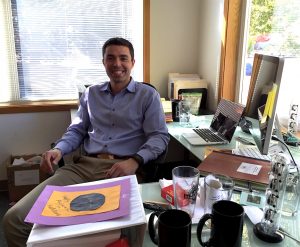
“So you’ve pivoted, based on your experience.” Mike: “Big time.”
Mike continued, “I actually got into science because I was interested in … oddly, it’s actually more of an Ashland-type story than you’d expect: I was interested in ethnobotany, which drew me into bio-chemistry. And then I dove super-deep into the hard sciences, and started working in cancer research, and discovered that I loved being in the laboratory. I loved my graduate laboratory work at the University of Virginia, where I had the opportunity through rotations to work on Legionnaire’s Disease, Kaposi’s Sarcoma, and the Herpes virus. I worked with Cytomegalovirus [Cyto = cell; megalo = large; virus = infectious agent; when you infect the cells, it gets big.] Eighty-percent of humans have the human variety of Cytomegalovirus (CMV); it’s very successful. CMV doesn’t show itself until the immune system is compromised or suppressed (for example, through an organ transplant); then it rears its ugly head. These viruses actually evolved with all different mammalian species since the mammalian radiation [Adaptive Radiation of Mammalian Orders]. So why are we studying viruses that no one has ever heard of? Viruses know more about the human immune system than we do, so we use them as models because … it’s like having a flashlight; we can shine a light into unknown areas of immunology.”
“We’re using viruses as a model to uncover things about the immune system.”
“It turns out that viruses know quite a bit and, also, viruses have the same modus operandi as cancer: to survive, to spread, and to evade the immune system. The point is that you can discover things about the immune system that you can then use to help therapies. In our case, we found that there was an immune cell that drove a faster and more effective specific immune response—and the lab in which I worked is about to publish the molecular basis for this. The hope is that you may be able to use that system—or target—to discover better therapies, for example, for solid tumors. You can use these discoveries as models to get there; it has to become a tractable problem. The research is difficult because, in humans, you don’t have that much tissue; you only have access to blood and biopsies. Biopsies are difficult because there are so few cells and you must grab them immediately, while they are fresh from the body.”
The People
The key to a great product is great people who are passionate about their work, and this is where the truly hard work comes in: recruiting and training great people—and retaining them. FlowJo, LLC provides a fabulous work environment: getting to work with other great people and having a comfortable workspace.
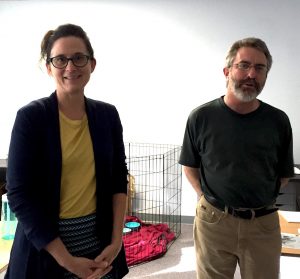
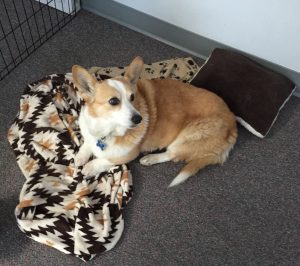
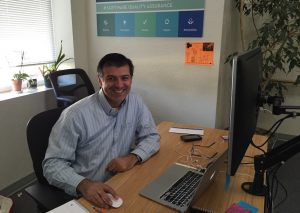
FlowJo’s Motto: Hire Great!
Q: The credentials of your staff are impressive. How do you judge technical excellence during an interview?
A: A great resume gets you in the door. We hire on four pillars and assess everybody based on those four pillars. It’s called: Hire Great! We don’t Hire Good; We Hire Great!
The Four Pillars:
- Communication: both presentation and interpersonal communication.
- Tech Excellence: what gets people in the door.
- Company fit.
- Passion for the work.
We make every technical hire give a presentation on the candidate’s own project that they are proud of, to the whole company, followed by a Q&A session with the audience. Everyone throughout the company provides feedback about the candidate: Tech Support, Sales, Marketing, Engineering, Executive Level.

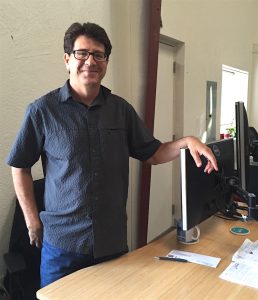
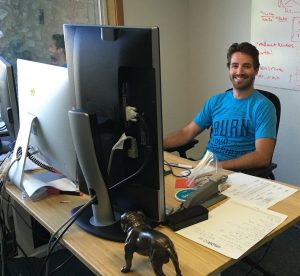
The candidate must be able to talk at multiple levels. Our company is too small for someone to hide; by its very nature, it’s a matrix organization. Of all the people we’ve recruited, we have a 100% retention; that takes a ton of effort.
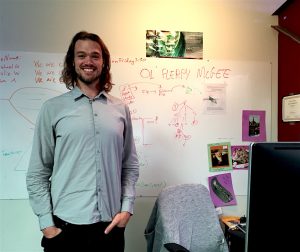

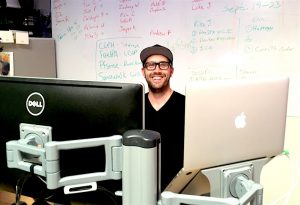

You have to want to come to work here and apply your knowledge to cancer research. If that doesn’t interest a candidate, we show them the door. We’re looking for the people who show more than a spark of interest—the fire has to be lit already.
Q: Where do you find your candidates?
- Recruiters
- Online Posts
- Referrals
- Networking
- Volunteering
A: All of the above.
Mike shared that people were really skeptical about whether the company could grow to its current size (from 18 to 38 people in a year) in Southern Oregon. He and his team stuck to their guns and made the commitment.
Referrals play a big part in finding candidates for openings; commonly, one great person networks with other great people, so you’re really tapping-in to a whole network when an employee refers someone they think would be a good fit for the team.
“Our in-person customer-facing folks are all PhD Scientists: four in the U.S. and one in Europe. We are hiring a fifth for the Product Manager position in Genomics. This Science-Force is education-focused because, for us, sales occur because scientists are empowered to analyze their data using our software.
“Our in-house Sales & Support Team and Technical Support are customer-obsessed, customer-first—if you call us, a real person here at HQ will answer the phone. They deal with people from all over the world, all day.
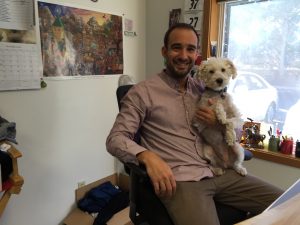
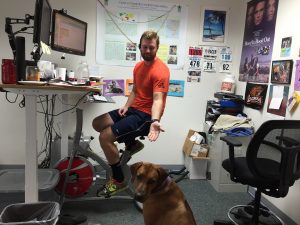
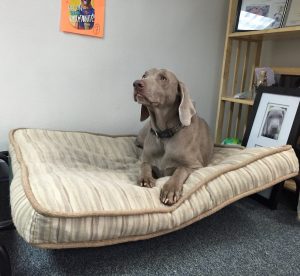

“We have a huge internship program; five last year (from both OIT & SOU), and we’re currently looking for four people to intern in our Science + Design department, which will be paid internships for six months. One biologist, one digital media specialist, and two people on the business and marketing side. They will help FlowJo, LLC with commercializing two new products. Interns are not put in a corner here, they work on real projects.”
“People are often really impressed with our company culture; the energy of the place.”
The Facility
You might think that the workspace is open and filled with amazing art work. It is. The workplace reflects the culture, and the furnishings emphasize function. From Sales Support to Tech Support to Executives, the focus is on the product, not fancy surroundings.
When FlowJo, LLC initially moved into their current space, they planned to rent out half of the space, and then decided against that plan in favor of retaining future expansion room. The open space has a half-court basketball court,

bounded by the Intern Office on one side

and a ping pong table on the other side.
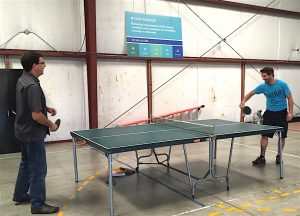
The white walls are punctuated with a science-centric art collection that depicts the output of the flow cytometry process.
The Art Collection
FlowJo, LLC’s Art Collection (FAC) includes:
FAC #1 Image of Proteins: In a gel with an applied electric current, small proteins run fast and big proteins run slow. This is a painting of such a gel, a very routine practice in life science laboratories.
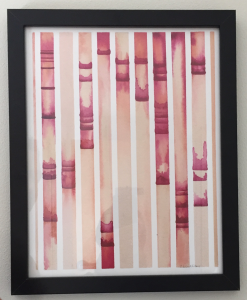
FAC #2 Image of Antibodies: The painting of Y-shapes depicts antibodies; the actual protein structure of antibodies, which are used in lock-and-key fashion to detect specific proteins on individual cells, and are also the basis of vaccines.
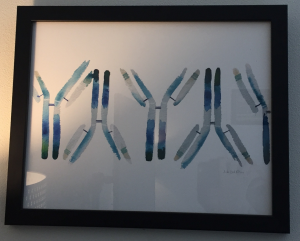
FAC #3 Image of painted-over plotted cells: Another piece of art depicts multi-dimensional data (e.g., 25 different parameters) captured from the T-cells from patients, post vaccination. Asking 25 questions about each individual cell is challenging to analyze, but you can reduce those dimensions and create a two-dimensional projection of all 25 dimensions that demonstrates how each of the cells is different. In this image, each dot represents one cell. This particular piece of art is the result of a plot generated using FlowJoTM and created by an artist in Hong Kong who used a robot to print out the image. The artist then painted over each plotted cell in the image—by hand!

Community Involvement
FlowJo, LLC’s staff plans to participate in the upcoming ScienceWorks Maker Faire Event. A sample board of crafted structures fabricated from Velcroed pipe cleaners and LEDs, representing antibodies on a cell, will demonstrate the result of running a cell through a flow cytometer; you can detect one cell at a time and discover which proteins a cell is expressing. This is intended to show how flow cytometry works and demonstrate to students how their bodies work.
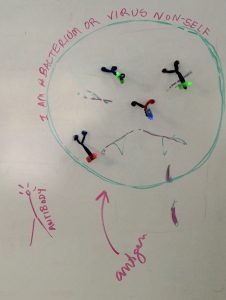
Market Presence
The well-structured business format and savvy staff, coupled with the quality of FlowJo, LLC’s software has earned the company notoriety; they have very broad reach in the scientific research community.
In Closing
The future looks bright for this gem of a company. Their recently-announced partnership with Illumina is a testament to the quality of their software and the wide reach of the FlowJoTM Brand within the life sciences research community.
Author: Karen
Vetted By: Caitlin, Jim & Mike
Written: 10/5/16
Published: 10/20/16
Copyright © 2016, FPP, Inc. All rights reserved.